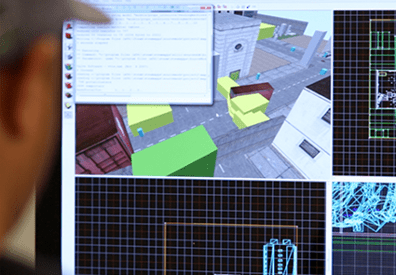Program Overview

In the Architectural Building Engineering Technology Associate Degree program, you will become a skilled technical architectural professional, learning how to create residential, commercial, and office buildings and how they are constructed.
You will learn how to create buildings that answer today’s economic, safety, technical, sustainability, and aesthetic requirements. The curriculum focuses on the fundamentals of architectural design, building technology, and environmental systems, including green technologies.
Read MoreFull Description
The Associate in Science degree in Architectural Building Engineering Technology is offered through the Department of Design + Architectural Building Technology.
The Architectural Building Engineering Technology degree program is based on the premise that buildings are designed and built using a team concept. As an integral member of that team, the architectural technician must have the ability to create and construct buildings that will answer the economic, safety, technical, sustainability, and aesthetic requirements of a project.
The associate degree program allows students to develop these necessary abilities by emphasizing the fundamentals of architectural design, structural engineering, environmental systems, sustainability, and construction technology. The program is also designed to instill within students at the associate level a sense of professionalism and a desire to serve and contribute to society.
In the associate degree program, Architectural Building Engineering Technology students will be introduced to drafting, graphic communications, three-dimensional theory, computer-aided drafting (CAD), construction documents, construction techniques, energy conservation, and building materials.
Students will acquire a developed set of skills to help them identify the appropriate design elements needed for building construction and convey important information to their building team, including other architects and engineers. They will also learn how to put together effective reports and presentations.
Students will develop problem-solving abilities to identify potential engineering problems and create effective solutions in a timely manner. They will learn to incorporate building systems into design plans, prepare drawings for construction, make visual guidelines, and more.
The associate degree program will also help them prepare for a variety of workplace responsibilities. Architectural engineering technologists will be expected to convert architectural designs into technical documents, writing detailed reports, and drafting specifications.
They must also know how to navigate two and three-dimensional CAD software to create topographical maps and construction schematics. They may be expected to evaluate building sites using specialized equipment and analyze construction materials.
Additional responsibilities may include estimating construction costs, selecting materials, performing analysis on electrical and mechanical systems, and making sure plans and construction activities comply with local building codes and regulations.
Upon successful completion of the 18 month degree program, architectural engineering technology students can get started with either the NEIT Bachelor of Science in Architectural Building Engineering Technology or the Bachelor of Science in Construction Management degree programs, the highest level of education offered at NEIT. These programs will further develop students as problem solvers and professionals in the field.
Potential Career Opportunities
The associate degree program will prepare students for careers as drafters, designers, engineering technicians, and more.
Graduates of the associate degree program can also pursue opportunities like the following:
CAD Drafter
Structural Designer
Manufacturing Architectural Products Manager
Construction Supervisor
Project Coordinator
FAQ
-
How much does an architectural technician with an associate degree make?
Current statistics on potential salaries and job outlook are listed on the Bureau of Labor Statistics (BLS) website.
-
Can you be an architect with an associate degree?
Architects are typically required to complete either a bachelor’s or master’s degree program. Degrees in architectural engineering technology allow graduates to get started with entry-level work experience in industrial engineering, mechanical engineering, or civil engineering firms. Other career opportunities include assistant to an architect, estimator, or specification writer.
-
What is architectural building engineering technology?
Architectural building engineering technology refers to the practical aspects of a building’s design and construction. Architectural building engineering technology professionals apply technical skills and engineering principles to assist architects, engineers, and planners in designing and developing buildings and cities.
-
Can an architectural technologist design buildings?
Individuals with an architectural engineering education will be able to embark on a promising career path. Architectural engineering professionals can assist architects, planners, and civil engineering technicians on construction projects by taking the lead on the technical and functional elements of a building, including building code, drafting and CAD, conceptual engineering drawing, and 3D models. Architects, meanwhile, focus more on the art and the science of the building, specifically when it comes to flow, function, style, building code, construction materials, bylaws, and overall design.
-
What can you do with an architectural technology degree?
A degree in architectural engineering technology will help prepare individuals for careers across the architecture industry. Popular job titles include civil engineering technician, construction coordinator, and cost estimator. These individuals may also pursue opportunities in specialty areas including fire and safety systems, electrical systems, or foundations. Other professional possibilities include drafters, designers, and more.



